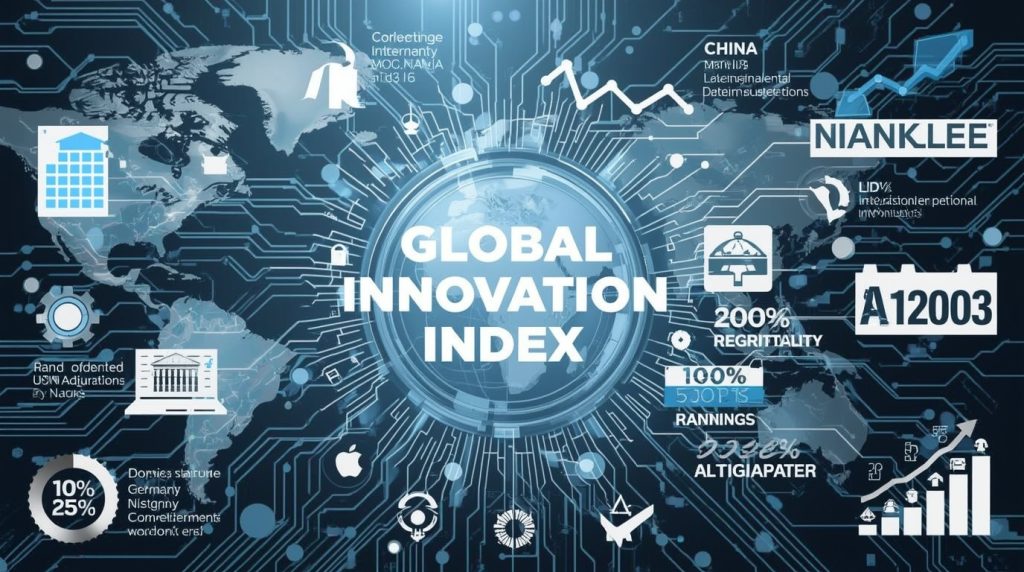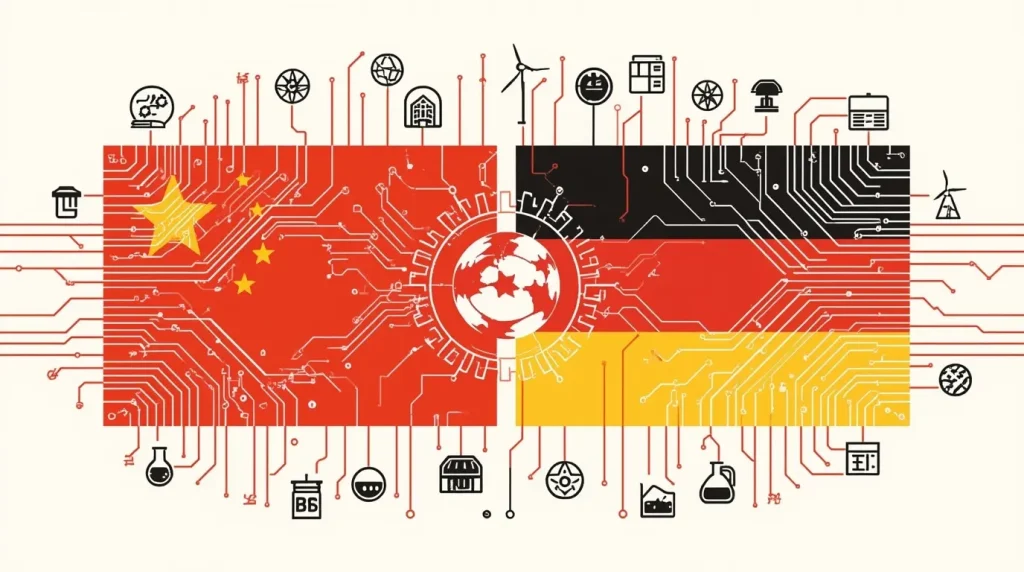China has officially joined the Global Innovation Index (GII) top 10 for the first time, dislodging Germany, which now sits in 11th place among innovative nations. This head-turning outcome for the 2025 GII indicates China’s strategic leap in research and its astonishing rise in tech achievements. The yearly study, overseen by the World Intellectual Property Organization (WIPO), uses 78 performance areas—among them R&D budgets, patent counts, venture funding, and tech shipments—to benchmark 139 countries.
Global Innovation Index 2025 Highlights
Europe still leads the 2025 GII scoreboard, but Asia’s rise is undeniable. Switzerland keeps its crown for the 14th straight year, with Sweden and the U.S. trailing. The GII 2025 top 10 is:
- Switzerland
- Sweden
- United States
- South Korea
- Singapore
- United Kingdom
- Finland
- Netherlands
- Denmark
- China

It’s notable that Germany drops to 11th, while the new entrant—China—becomes the first middle-income Asian nation to breach the top 10. The new standings highlight both the enduring strength of European innovation and the unexpected ascendancy of the Chinese technology landscape.
China’s Remarkable Innovation Journey
Over the last few decades, China has turned itself into one of the world’s leading innovative nations, thanks to smart policies that pour money into science and technology. By 2024, the country is set to outpace everyone else and take the top spot in total research and development spending. Already, Chinese inventors are filing around 25% of all international patent applications.
A new report from the World Intellectual Property Organization (WIPO) makes it clear that China’s innovation pipeline has matured. In fact, 24 out of the top 100 global innovation hot spots are now in the country. The Shenzhen-Hong Kong-Guangzhou area keeps its crown as the most energetic innovation hub in the world, followed closely by Tokyo-Yokohama and the San Jose-San Francisco zone. Beijing is also in the top five.

Global Innovation Cluster Rankings 2025
| Rank | Innovation Cluster | Country |
|---|---|---|
| 1 | Shenzhen-Hong Kong-Guangzhou | China/Hong Kong |
| 2 | Tokyo-Yokohama | Japan |
| 3 | San Jose-San Francisco | United States |
| 4 | Beijing | China |
| 5 | Seoul | South Korea |
Germany’s Position and European Context
Germany sliding from 9th to 11th place is more than just a statistic; it is a wake-up call for Europe’s economic giant. The country is still a giant when it comes to industrial innovation, but in the words of WIPO Director General Daren Tang, it now has to shift into being a “powerhouse of digital innovation” to keep its edge.
Shifts in innovation rankings don’t mean that countries are losing their creative edge—instead, they show how fierce the race among world innovators has become. Germany still boasts seven of the planet’s top 100 innovation hotspots, with Munich leading the pack and proving that hubs in the country are still powerhouses of new ideas.
Other European innovators held their ground, nudging upward on the list. Finland, the Netherlands, and Denmark kept their spots in the top 10. France arrived next at 13 and Ireland followed closely at 18, showing that the region is still a desirable playground for inventive projects.
Global and European Investment Patterns in Innovation
Looking at wider trends, the upcoming 2025 Global Innovation Index (GII) contains downloads that throw a brake light on fresh capital. Research and development (R&D) growth slid to 2.9% in 2024, a sharp drop from 4.4% the year before and the weakest increase since the 2010 financial downturn. Projections from the World Intellectual Property Organization (WIPO) anticipate a further easing to 2.3% in 2025.
Corporate outlays in real terms have been hit harder, recording a deceleration to a meager 1%, well below the decade benchmark of 4.6%. While ICT companies—especially those pivoting to artificial intelligence—along with software and pharmacological developers pumped more cash into their labs, manufacturers such as car and consumer-goods makers tightened their belts amid softening earnings, cutting budget lines that earlier accommodated inventive work.
Venture capital investments in 2024 told a two-sided story. The overall cash flowing in climbed 7.7%, mainly thanks to a flurry of megadeals in the U.S. and a frenzied rush toward generative-AI projects. However, the number of new VC rounds dropped 4.4% worldwide; this marks the third straight year that the deal count has slipped.
China-Germany Economic Relations: The Innovation Shift
These shifting innovation landscapes unfold against a parallel tightening of economic ties between China and Germany. German official stats reveal that trade between the two nations hit €122.8 billion during the first half of 2025, closing to a variance of merely €2.2 billion compared to U.S.-Germany trade for the same period. Analysts expect China to reclaim the title of Germany’s largest trade partner by the end of 2025.
Yet the rapprochement is growing ever more complicated. China is repurposing itself from the world’s go-to factory into a digital and advanced-technology contender. In fact, high-tech goods represented 73% of all Chinese exports to the EU in 2022, while the corresponding figure for German shipments slipped to 61%.
This complex interplay results in a blend of rivalry and partnership. Leading German auto manufacturers, for instance, continue to pour cash into China. VW is setting the stage with the establishment of its largest research-and-development centre outside its home market, in Hefei, backed by a €2.5 billion cheque.
China’s manufacturers are continuing their push into Germany, as CATL’s new 1.8-billion-euro battery plant in Erfurt shows. This facility not only prides itself on employing roughly 1,700 people but also links up with trusted German research bodies, including the Fraunhofer Institute, to push the envelope on battery tech.

Global Innovation Beyond the Headlines
The GII report warms up a lot of emerging actors who rarely steal the limelight. India is again the top name among lower-middle-income economies, peeling off a steady 38th place overall. Vietnam is just a step behind at 44th, with the Philippines rounding out the list at 50th.
What’s outstanding is the list of 17 lower- and middle-income economies that are outdoing the benchmarks. Both India and Vietnam keep the award for the longest streak as steady overachievers, while the Sub-Saharan belt has the largest club of surprise improvers. South Africa lags at 61st, with Senegal a surprising 89th and Rwanda sprinting ahead at 104th.
Think Tanks and Statecraft 2. Out of the report’s insight, policymakers in Berlin and Beijing need to re-tighten their road maps. For China, the newer headache is juggling fresh tech flair with getting slammed on access and discrimination charges that the EU is increasingly waving.
Germany’s 2023 China Strategy continues to develop innovation while balancing the economic ties that still exist with China. The document’s central idea is “de-risk, not decouple,” so officials want to avoid being dependent on China for technologies that could be blocked in a crisis, while also keeping the value of trade, investment, and R&D collaboration intact. The strategy accepts that innovation rivalry with China is a fact and describes activating markets and diversifying supply chains to lower risk, not freeze relations. WIPO Director General Daren Tang summed it up in a recent conference: “Germany is still a powerful industrial innovator; the challenge is to complement that strength with the ability to lead in digital innovation, too.”
The 2025 Global Innovation Index gives a window on where the competition is headed. Switzerland, Sweden, and the United States remain the traditional leaders, but China’s new place in the top 10 confirms that a broad set of nations is developing cutting-edge technologies. The search for digital leadership is therefore not zero-sum; it is about how innovators in different economies can exchange skills, resources, and ideas while guarding against the leaking of technologies that have a dual-use potential.
The economic ties between China and Germany—a semiconductor, automotive, and battery powerhouse—will not unwind overnight, but they are likely to become more layered, with competition and collaboration coexisting side by side. As a Diplomat author advised, the right mindset is to “identify which technologies can be protected and which partnerships will accelerate innovation.”
With so many pressing issues today, from climate change to rising geopolitical tensions, the ongoing progress of leading innovative nations is more important than ever if we want to solve the world’s biggest problems. The Global Innovation Index (GII) report points out that, even with slower investment in some sectors, breakthroughs keep coming. Breakthroughs continue in green supercomputers, next-gen batteries, genome sequencing, and AI, to name just a few areas.
Seen from space, the competition and collaboration among innovative countries is a key force that will shape the world’s economies and technologies for the next decade, if not longer. That’s why tracking these shifting currents is critical for anyone making policy, running a business, or keeping up with the big stories in global innovation.
Source: https://edition.cnn.com/2025/09/16/business/china-germany-most-innovative-countries-intl
For more incredible stories of everyday news, return to our homepage.




